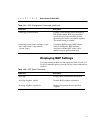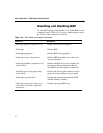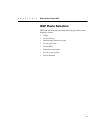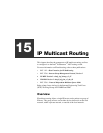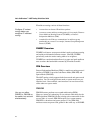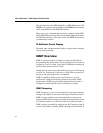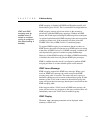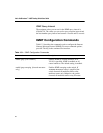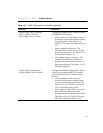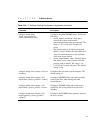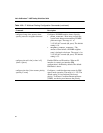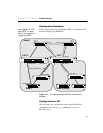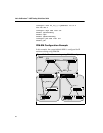
C H A P T E R 15 IP Multicast Routing
279
IGMP snooping is disabled, all IGMP and IP multicast traffic will
flood within a given VLAN. This is normal 802.1d bridge behavior.
IGMP and IGMP
snooping must be
enabled when IP
unicast or multicast
routing is configured
(the default setting is
enabled).
IGMP snooping expects at least one device in the network to
periodically generate IGMP query messages. Without an IGMP
querier, the switch stops forwarding IP multicast packets to the ports.
An optional optimization for IGMP snooping is the strict recognition
of multicast routers only if the remote devices have joined the
DVMRP (224.0.0.4) or PIM (244.0.0.13) multicast groups.
To support IGMP snooping in environments that do not have an
IGMP querier, the switch can function as an IGMP querier, according
to the rules of IGMP Version 2.0. If IGMP snooping is enabled, the
switch periodically queries for multicast group memberships.
However, if either IGMP snooping is disabled or IGMP functionality
is disabled, the switch does not generate IGMP query messages.
IGMP is enabled when the switch is configured to perform IGMP
snooping and there is no other reliable querier on the network.
IGMP Leave Message
IGMP snooping supports the IGMP leave message. When a port
sends an IGMP leave message, the switch removes the IGMP
snooping entry after 10 seconds. The router still sends a query to
determine which ports wish to remain in the multicast group. If other
members of the VLAN wish to remain in the multicast group, the
router will ignore the leave message, but the port is removed from the
IGMP snooping table.
If the last port within a VLAN sends an IGMP leave message, the
router will not receive any responses to the query, and the router will
immediately remove the VLAN from its multicast group.
IGMP Display
The show igmp snooping command can be displayed with a
summary or detail view.



